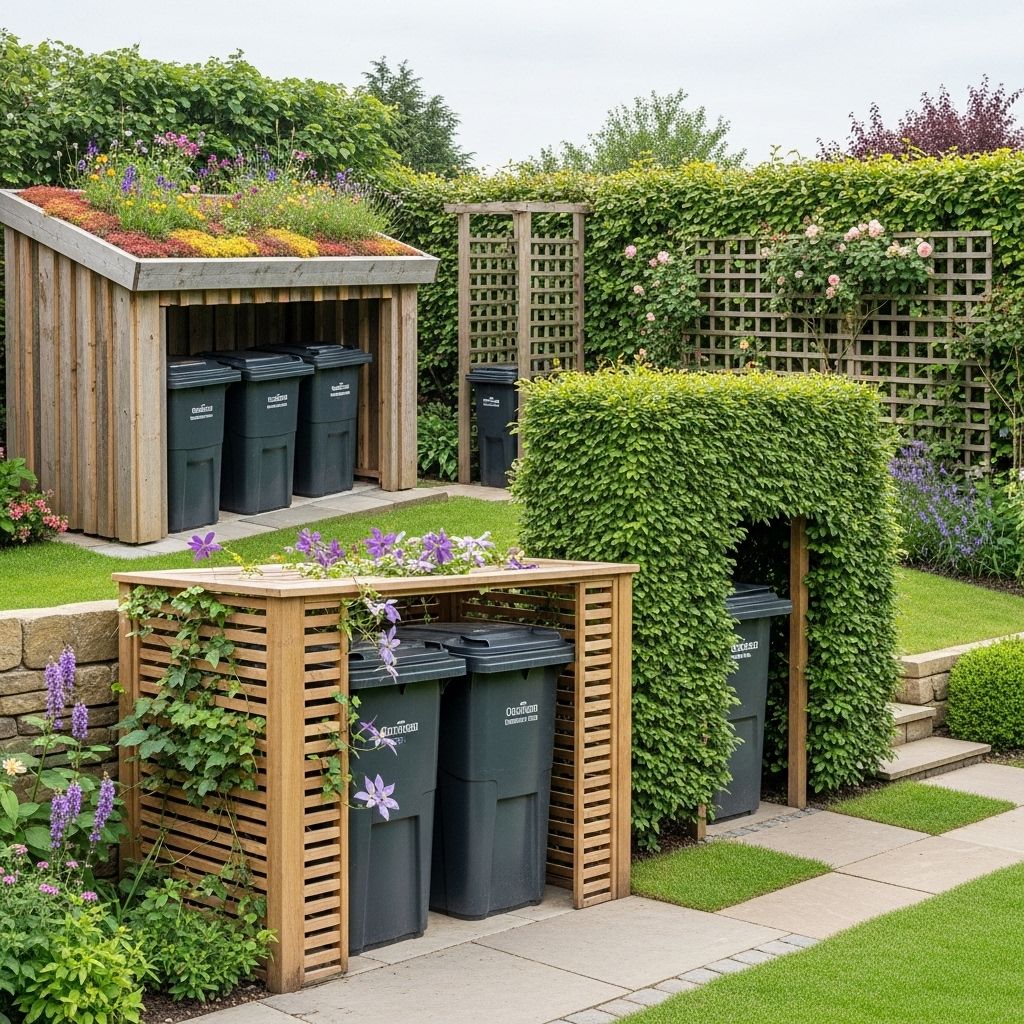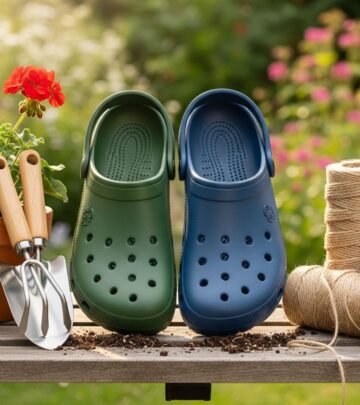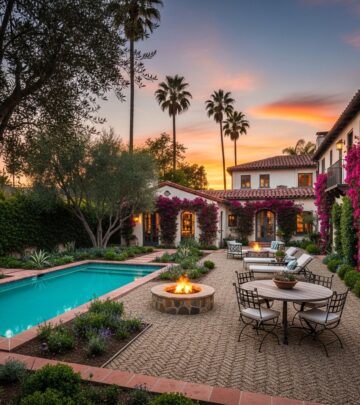How To Hide Trash Cans Outside: 10 Ingenious Garden Solutions
Transform your outdoor space by concealing those necessary but unattractive garbage bins with these clever disguises

Image: HearthJunction Design Team
Ever since municipal garbage collection began in 1875 (when London’s streets became too filthy for Parliament to ignore), homeowners have been faced with the challenge of storing unsightly trash bins. While these containers are essential for waste management, they don’t exactly enhance the aesthetic appeal of our carefully designed gardens and outdoor spaces.
Fortunately, there are numerous creative solutions to disguise these necessary eyesores. From purpose-built enclosures to clever camouflage techniques, we’ve compiled ten ingenious ideas to help you conceal your trash cans while maintaining the beauty of your outdoor environment.
1. Custom Garbage Houses (Müllhäuser)
In Germany, where efficiency and design often go hand-in-hand, the concept of the ‘Müllhäus’ or ‘garbage house’ offers an elegant solution to the trash can dilemma. Passau-based company Traumgarten has developed a collection of both standard and custom-sized Müllhäuser that transform unsightly bins into attractive garden features.
These sophisticated structures feature larch wood panels and high-pressure laminate plate doors, creating a clean, modern aesthetic that blends seamlessly with contemporary garden designs. The beauty of these purpose-built enclosures is their functionality – they’re specifically designed to accommodate standard garbage and recycling bins while providing easy access for both users and collection services.
Some models even incorporate plant trays on top, allowing you to create miniature roof gardens that further enhance their visual appeal. This dual-purpose approach transforms what would typically be dead space into an opportunity for additional greenery, effectively disguising the utilitarian purpose of the structure beneath a living roof.
2. Garden Sheds with Planter Roofs
For those who appreciate the natural warmth of wood and the charm of a traditional garden shed, cedar-roofed enclosures offer an attractive solution. These miniature structures are specifically designed to house two standard garbage bins while adding architectural interest to your garden.
The key feature that sets these enclosures apart is their green roof design. Incorporating a waterproof rubber membrane beneath the cedar construction, these roofs support small plantings that help the structure blend into the surrounding landscape. The living roof not only camouflages the utilitarian purpose of the shed but also provides ecological benefits, including improved insulation, rainwater absorption, and habitat creation for beneficial insects.
While more substantial than some other options, these garden shed solutions create a permanent and attractive feature that eliminates the visual intrusion of plastic bins while providing secure storage that keeps wildlife at bay. The natural cedar construction weathers beautifully over time, developing a silvery patina that enhances its integration into the garden setting.
3. Roof Garden Camouflage
Taking the concept of planted tops further, dedicated garbage enclosures with intensive roof gardens offer perhaps the most complete transformation of trash storage areas. These structures completely conceal their utilitarian purpose beneath lush plantings, turning what would be an eyesore into a garden feature.
The roof garden approach works particularly well in urban environments where space is limited, and every square foot must serve multiple purposes. By utilizing the top of the enclosure for planting, you effectively reclaim green space while hiding necessary infrastructure. This approach is especially effective when the enclosure is visible from elevated viewpoints, such as second-story windows or terraced gardens.
For maximum impact, choose plants that complement your existing garden design. Drought-tolerant succulents create a modern, low-maintenance look, while cascading flowers and trailing vines soften the structure’s edges. With proper construction that includes adequate waterproofing and drainage, these roof gardens require minimal maintenance while providing maximum concealment.
4. Willow Three-Panel Screens
For a more flexible, less permanent solution, folding screens offer versatility and natural charm. Willow three-panel trash can covers provide an adjustable barrier that can be repositioned as needed or stored away when not in use. These screens feature a durable steel frame supporting woven willow panels, combining structural integrity with organic texture.
The three-panel design allows for customization of the enclosure size and configuration, making it suitable for various spaces and numbers of bins. This flexibility is particularly valuable for renters or those who prefer not to install permanent structures. The natural willow material weathers to a silver-gray that blends harmoniously with most garden settings.
Beyond their practical purpose, these screens add textural interest to the garden landscape. The woven pattern creates a play of light and shadow that softens their presence, while the natural material ensures they complement rather than compete with surrounding plantings. For enhanced privacy and concealment, trailing vines can be encouraged to grow along the steel framework, further integrating the screens into the garden environment.
5. DIY Willow Screens
For the hands-on homeowner, pre-made braided willow panels offer a cost-effective DIY option. Available in various sizes (typically 36 and 72 inches wide), these panels can be configured to create custom-sized screens perfectly tailored to your specific trash bin dimensions and spatial constraints.
The beauty of this approach lies in its customizability. Panels can be attached to existing fence posts, secured to simple wooden frames, or even mounted on wheels for mobility. This flexibility allows you to create a solution that precisely fits your needs while maintaining a cohesive look with your existing garden elements.
Willow screens provide excellent ventilation while still obscuring the view of bins, making them ideal for regions where heat and humidity might cause odor issues with more enclosed solutions. Their natural appearance works particularly well in cottage-style gardens or settings where a rustic aesthetic is desired. For a more contemporary look, the screens can be painted or stained to complement modern garden designs.
6. False Fence Integration
For properties with existing fencing, creating a false fence section specifically designed to house trash cans offers a seamlessly integrated solution. This approach, exemplified by garden blogger Maria of Almbacken, involves installing a panel that matches or complements your existing fence, creating a dedicated alcove or nook for garbage and recycling units.
The false fence can be painted or stained to match the color of your existing boundary, ensuring visual continuity. This method is particularly effective for side yards or areas adjacent to property lines where bins must be stored. By extending the fence line slightly to create a recessed area, the bins become virtually invisible from most viewing angles.
This approach works with various fencing materials, from traditional wooden slats to modern composite panels. The key is maintaining consistent design elements so that the trash storage area appears as an intentional part of the overall boundary design rather than an afterthought. Adding simple doors or a removable panel facilitates easy access while maintaining the clean lines of the fence when closed.
7. Stylish Storage Containers
For those seeking a solution that doesn’t merely hide trash cans but transforms them into a design feature, purpose-built decorative storage containers offer an elegant option. Companies like design@gartenhaus from Augsburg, Germany, create ‘Dustbinboxes’ that conceal standard trash cans within stylish enclosures attractive enough for front gardens.
These containers typically feature clean lines, durable materials, and thoughtful details that elevate them beyond mere utility. Constructed from weather-resistant materials like treated wood, metal, or high-quality polymers, these enclosures are designed to withstand the elements while maintaining their aesthetic appeal year after year.
What distinguishes these solutions from simple sheds is their intentional design emphasis. Rather than attempting to disappear into the landscape, these containers serve as architectural elements that complement your home’s exterior. Available in various styles from rustic to ultra-modern, they can be selected to enhance your existing design aesthetic while efficiently managing waste storage.
8. CitiBins Urban Solutions
In urban environments where space comes at a premium, specialized solutions like CitiBins offer space-efficient concealment designed specifically for city dwellers. These compact enclosures are engineered to maximize limited space while maintaining accessibility and addressing the unique challenges of urban waste management.
CitiBins and similar urban-focused solutions often feature vertical designs that utilize height rather than width, minimizing their footprint while still accommodating standard-sized bins. Their construction typically emphasizes durability and security, with robust materials and locking mechanisms that prevent unauthorized access – an important consideration in densely populated areas.
These systems frequently incorporate modular designs that can be customized to fit unusual spaces or expanded as needs change. Their aesthetic tends toward the contemporary, with clean lines and weather-resistant finishes that complement urban architecture. For city gardens, rooftops, or small courtyards, these purpose-built solutions provide effective concealment without sacrificing valuable square footage.
9. Plant-Based Concealment
For a more natural approach to hiding trash cans, strategic plantings offer an environmentally friendly solution that enhances rather than merely disguises. Carefully selected shrubs, ornamental grasses, and small trees can create effective screens that blend seamlessly with your existing landscape design.
The key to successful plant-based concealment lies in choosing appropriate species. Evergreen options like arborvitae, boxwood, or rhododendrons provide year-round screening, while deciduous plants with dense branching patterns maintain reasonable coverage even in winter months. Tall ornamental grasses like miscanthus or pampas grass offer seasonal concealment with dramatic visual interest.
This approach works particularly well for bins that must be positioned away from structures or in more naturalistic garden settings. By incorporating the screening plants into broader planting schemes, the utility area becomes just another part of the garden landscape rather than an obvious hiding spot. For enhanced effectiveness, consider combining plantings with simple trellises or supports that can host climbing vines for additional coverage.
10. Trellis and Lattice Screens
Combining structure with living elements, trellises and lattice panels offer a middle ground between built enclosures and pure plantings. These frameworks provide immediate visual screening while also supporting climbing plants that enhance concealment and beauty over time.
High-quality lattice panels from manufacturers like Trex offer durability and decorative appeal even before plants are established. The geometric patterns create visual interest while partially obscuring the view of bins behind them. As climbing plants like clematis, jasmine, or ivy become established, the screening effect increases, and the structure itself recedes visually.
This approach is particularly effective for creating vertical gardens in limited spaces. The combination of structural elements and living plants maximizes both screening effectiveness and aesthetic appeal. For year-round concealment, combine deciduous flowering vines that provide seasonal color with evergreen climbers that maintain coverage through winter months.
Frequently Asked Questions
Q: How do I choose the right trash can concealment solution for my space?
A: Consider your specific constraints and needs, including available space, number of bins, climate conditions, and aesthetic preferences. Permanent structures like custom sheds work well for homeowners with adequate space, while renters might prefer portable screens or plant-based solutions that can move with them.
Q: Will concealing my trash cans make them difficult to access for garbage collection?
A: Properly designed concealment solutions should enhance organization while maintaining accessibility. Look for options with removable front panels, doors, or hinged tops that allow bins to be easily rolled out on collection day. Consider your specific collection service’s requirements when planning your solution.
Q: Are there low-maintenance options for hiding trash cans?
A: Yes, several low-maintenance approaches exist. Pre-built structures made from composite materials require minimal upkeep, while evergreen shrubs need only occasional pruning once established. For the lowest maintenance, consider standalone screens or enclosures made from weather-resistant materials that don’t require painting or staining.
Q: Can I build a trash can enclosure that matches my home’s architecture?
A: Absolutely! Custom-built enclosures offer the greatest opportunity to complement your home’s style. Use similar materials, colors, and design elements to create visual continuity. For instance, if your home has cedar shingles, incorporate them into your enclosure design for a cohesive look.
References
- https://www.gardenista.com/posts/garden-hacks-10-genius-ideas-to-hide-trash-cans/
- https://www.gardenista.com/web-stories/garden-hacks-10-genius-ideas-to-hide-trash-cans-gardenista-3pxrd/
- https://in.pinterest.com/pin/713961347212792966/
- https://www.plasticplace.com/blogs/blog/how-to-hide-trash-cans
- https://www.decks.com/how-to/articles/5-best-ways-on-how-to-hide-trash-cans-outside
Read full bio of Srija Burman












